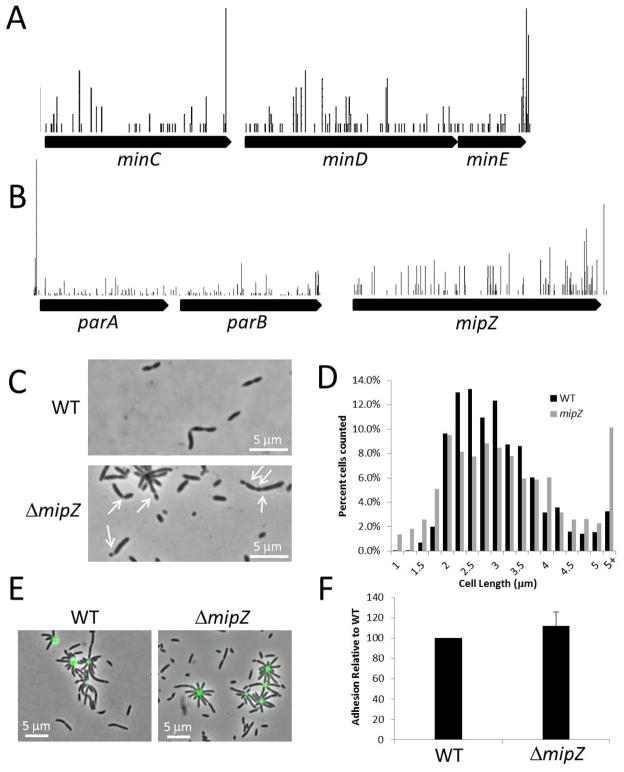Figure 3.
Non-essentiality of septum site selection mechanisms and characterization of B. subvibrioides ΔmipZ. A) Transposon map of the min locus in A. tumefaciens, demonstrating it is likely non-essential. B) Transposon map of the parA, parB and mipZ genes in B. subvibrioides, demonstrating it is likely non-essential. C) Phase contrast image of wild-type and ΔmipZ. White arrows indicate incorrectly placed septum sites in ΔmipZ, either placed asymmetrically or multiple sites in the same cell. D) Histogram of wild-type and ΔmipZ cell sizes demonstrating deletion of mipZ causes increased variability of cell size (both smaller and larger than wild-type). E) Lectin staining of holdfast material of wild-type and ΔmipZ. F) Short-term adhesion assay of ΔmipZ. Equal numbers of cells for wild-type and ΔmipZ were inoculated into 24-well petri dishes and incubated for 2 h (in triplicate). After incubation, each well was washed three times with PYE and stained with crystal violet. After washing away excess crystal violet, bound stain was eluted and measured spectrophotometrically. Values were normalized to wild-type. Each assay was performed three times and average and standard deviation were calculated.

